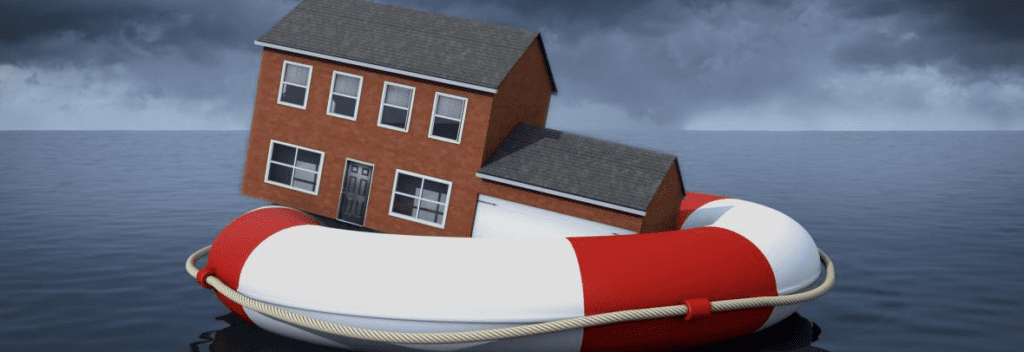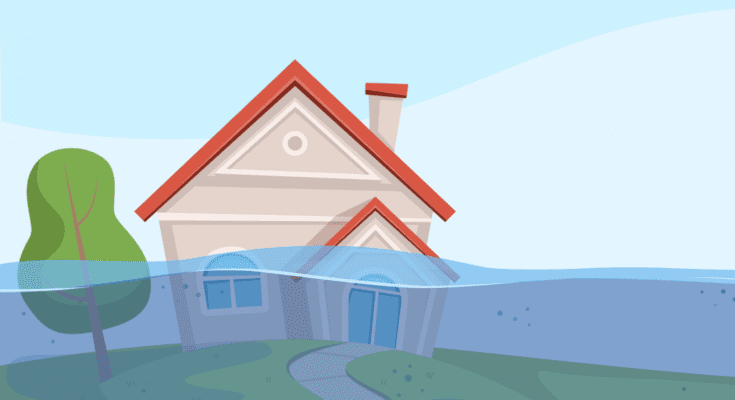Flood insurance is a type of property insurance that protects a home against losses caused by water damage from floods. It can flood when it rains long or when the snow melts, storm surges hit the coast, storm drains get clogged, or levee dams fail.

A flood is usually a big deal in many places, and if you don’t have extra insurance, you won’t be covered for the damage it causes.
What is Covered in Flood Insurance?
These are some of the things that a basic flood policy will cover:
- Cracks and breaks in the house and its foundation
- The water and electricity systems
- Fireplace, water tank, and central air conditioner
- Refrigerators, stoves, and appliances that are made in
- Putting carpeting over an empty floor for good
- Flood debris cleanup
What Isn’t Covered in Flood Insurance
It’s also important to know what flood insurance doesn’t cover. The National Flood Insurance Program (NFIP) lists the following types of property that are not covered by general flood insurance:
- Damage from water, mould, or mildew that “the homeowner could have avoided.”
- Money, rare metals, and valuable papers like stock certificates
- Things that are outside, like hot tubs, pools, wells and septic systems, gardening, decks, fences, and patios
- The costs of living, like temporary housing, if storm damage makes your home unlivable.
- Cars and other vehicles that move themselves (but if you have full coverage, your auto insurance may protect your vehicle somehow).
The NFIP also says that flood insurance doesn’t cover much, if anything, for places below ground, like crawl spaces and basements and the things that are in them. A lot of the time, building insurance covers stuff in these areas, like the heater. Others, like the washer and dryer, are usually covered by insurance for personal belongings. And some things, like your personal belongings, might not be covered if they are kept in rooms below ground.

Talk to your insurance company to ensure you understand the specifics of your flood insurance policy, including what it covers and doesn’t cover. They can also help you make the best decisions for your case.
How Flood Insurance Works
A flood insurance policy is a type of disaster insurance different from the basic risk insurance that comes with a homeowner’s policy. Policies for flood protection are available for all homes and businesses.
Standard home insurance covers water damage inside the house caused by weather or broken pipes. When it comes to floods, though, it usually doesn’t cover damage or loss. Most of the time, people living in flood-prone areas need special protection.
Flood insurance works pretty much the same way as other types of insurance. The insured (the property owner) pays a yearly fee based on the deductible they choose and how likely the property will flood.
The homeowner is covered if flooding from outside causes the damage or loss of the property or its belongings. Rain, snow, and storms could cause this, or failed or fallen infrastructure. As long as the insurance limit is met, they get cash for the amount needed to fix the damage and rebuild the building.
Unlike most homeowner’s insurance, flood insurance needs two separate policies to cover the house and its belongings. You need a different coverage rider if the rising floodwaters didn’t cause the sewer backup.
The Worth of Flood Insurance
The NFIP sets the prices of flood insurance plans so that the costs will be the same from one company to the next. The NFIP can help you find an insurance agent if you live in a flood zone or a town that is part of the NFIP.
Your agent will determine where your home is, how it’s built, how close it is to a body of water, and how high it is to determine how much your insurance will cost. The type of coverage you choose, like replacement cost value vs. real cost value, will also change the costs.
Prices can change depending on whether the home is in a flood zone, how old it is, and how many floors it has. A Preferred Risk Policy is a cheaper type of flood coverage covering the house and its contents for one price.
It is best for homes in moderate to low-risk areas. FEMA has a “Preferred Risk Policy.” Some towns that protect against flooding can also get discounts from the NFIP. Because of this, yearly premiums can be very different.
Conclusion
Many things will determine if you should get flood insurance, but the main one is whether or not your home is in an area that is prone to flooding. But storms can happen anywhere. Your house can flood for many reasons, not just because you live near water. These can be weather, melting snow, or clogged drains.

